How To Install Vnc Viewer On Ubuntu
Virtual Network Computing (VNC) is a widely used graphical desktop-sharing system that allows user accounts to remotely connect and control the desktop interface of one computer from another computer or mobile device.
In this article, we will explain how to install and configure a VNC Server on a Ubuntu 18.04 Desktop edition via tigervnc-server program.
Testing Environment
VNC Server: 192.168.56.108 VNC Client: 192.168.56.2
Install a Desktop Environment in Ubuntu
As I said, VNC is a desktop-sharing system, so you need to have a desktop environment installed on your Ubuntu server. You can install the DE of your choice by running the appropriate commands below. For the purpose of this article, we will install Ubuntu Gnome (Official flavor).
$ sudo apt-get install ubuntu-desktop #Default Ubuntu desktop $ sudo apt install ubuntu-gnome-desktop #Ubuntu Gnome (Official flavor) $ sudo apt-get install xfce4 #LXDE $ sudo apt-get install lxde #LXDE $ sudo apt-get install kubuntu-desktop #KDE
Install and Configure a VNC in Ubuntu
Tigervnc-server is a high-speed, multi-platform VNC program which runs an Xvnc server and starts parallel sessions of Gnome or other Desktop Environment on the VNC desktop.
To install TigerVNC server and other associated packages in Ubuntu, run the following command.
$ sudo apt install tigervnc-standalone-server tigervnc-common tigervnc-xorg-extension tigervnc-viewer
Now start the VNC server by running the vncserver command as a normal user. This action will create the initial configuration stored in the $HOME/.vnc directory and it will also prompt you to set up a login password.
Enter a password (which must be at least six characters length) and confirm/verify it. Then set a view-only password if you wish, as follows.
$ vncserver $ ls -l ~/.vnc
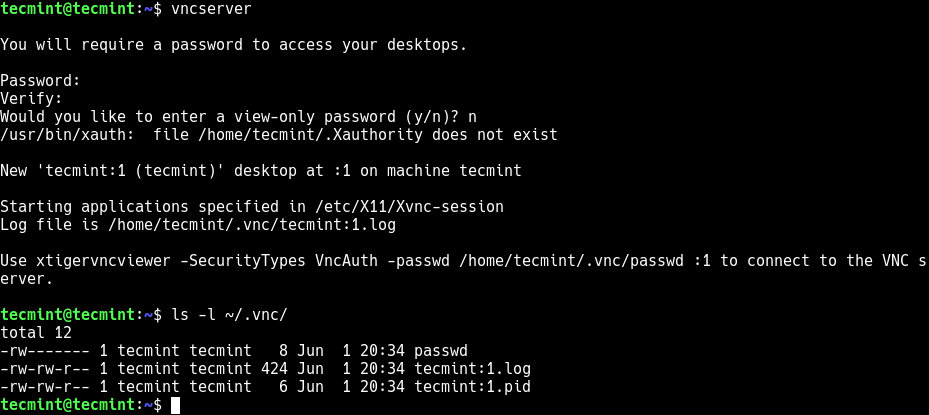
Next, we need to configure the DE to work with the VNC server. So, stop the VNC server using the following command, in order to perform some configurations.
$ vncserver -kill :1

To configure GNOME or whatever desktop you have installed, create a file called xstartup under the configurations directory using your favorite text editor.
$ vi ~/.vnc/xstartup
Add the following lines in the file. These commands will be automatically executed whenever you start or restart the TigerVNC server. Note that the commands may vary depending on the DE you installed.
#!/bin/sh exec /etc/vnc/xstartup xrdb $HOME/.Xresources vncconfig -iconic & dbus-launch --exit-with-session gnome-session &
Save the file and set the appropriate permission on the file so it can be executed.
$ chmod 700 ~/.vnc/xstartup
Next, start the VNC server by running the following command as a normal user. Set your own values for the display geometry. In addition, use the -localhost flag to allow connections from the localhost only and by analogy, only from users authenticated on the server.
In addition, VNC by default uses TCP port 5900+N, where N is the display number. In this case, the :1 means that the VNC server will run on display port number 5901.
$ vncserver :1 -localhost -geometry 1024x768 -depth 32

To list VNC server sessions on your system, run the following command.
$ vncserver -list

Once the VNC server has started, check the port it is running on with the netstat command.
$ netstat -tlnp
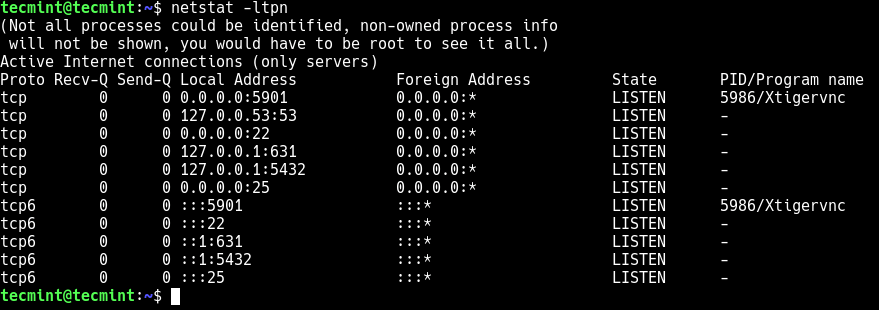
Connecting to VNC Server via VNC Client
In this section, we will show how to connect to the VNC server, but before we go into that, you need to know that by default VNC is not secure by default (it is not an encrypted protocol and can be subject to packet sniffing). This problem can be fixed by creating a tunnel from the client to server connection through SSH.
Using SSH tunneling, you can securely forward traffic from your local machine on port 5901 to the VNC server on the same port.
On Linux client machine, open a new terminal window and run the following command to create an SSH tunnel to VNC server.
$ ssh -i ~/.ssh/ubuntu18.04 -L 5901:127.0.0.1:5901 -N -f -l tecmint 192.168.56.108
Next install vncviewer client such as TigerVNC Viewer as follow s(you can install any other client of your choice).
$ sudo apt install tigervnc-viewer #Ubuntu/Debian $ sudo yum install tigervnc-viewer #CnetOS/RHEL $ sudo yum install tigervnc-viewer #Fedora 22+ $ sudo zypper install tigervnc-viewer #OpenSUSE $ sudo pacman -S tigervnc #Arch Linux
Once the installation is complete, run your VNC client, specify the address localhost:5901 to connect to display 1 as follows.
$ vncviewer localhost:5901
Alternatively, open it from the system menu, enter the address above and then click Connect.
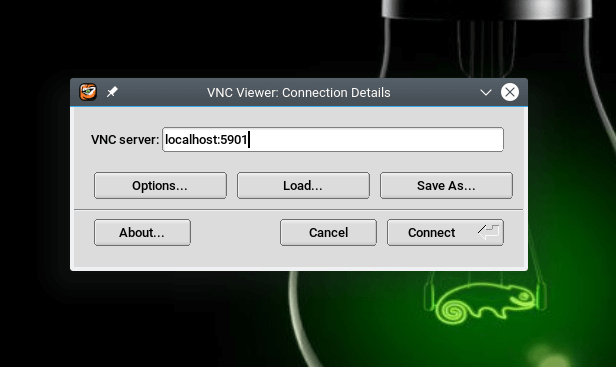
You will be prompted to enter the VNC login password created earlier on, enter it and click OK to proceed.
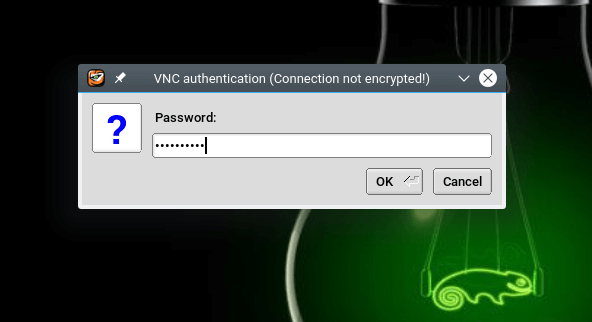
If the password is correct, you will land in the login interface of your desktop. Enter your password to access the desktop.
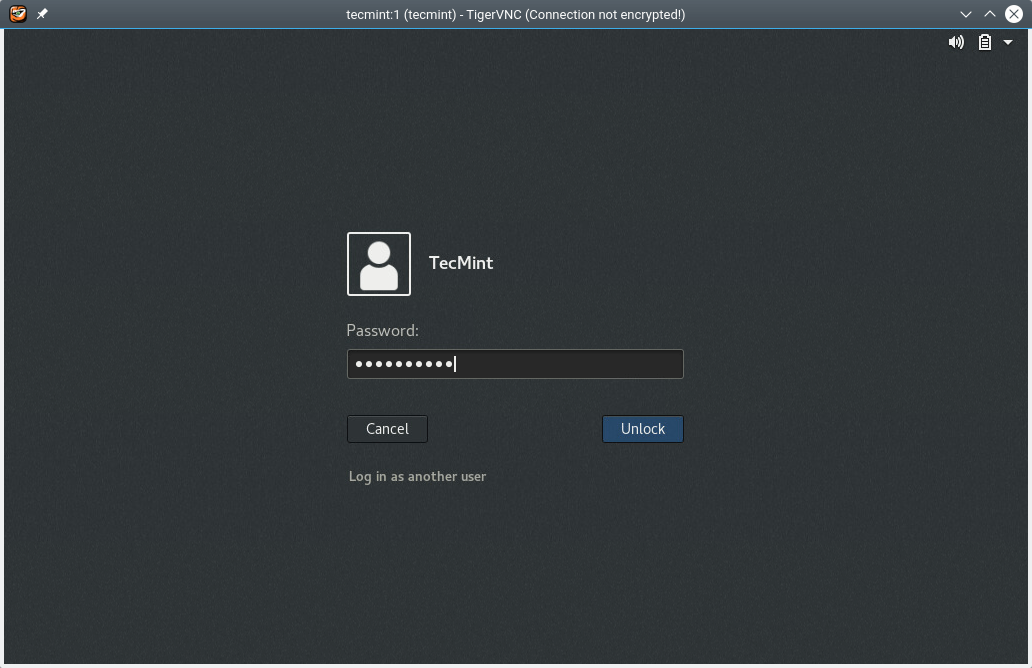
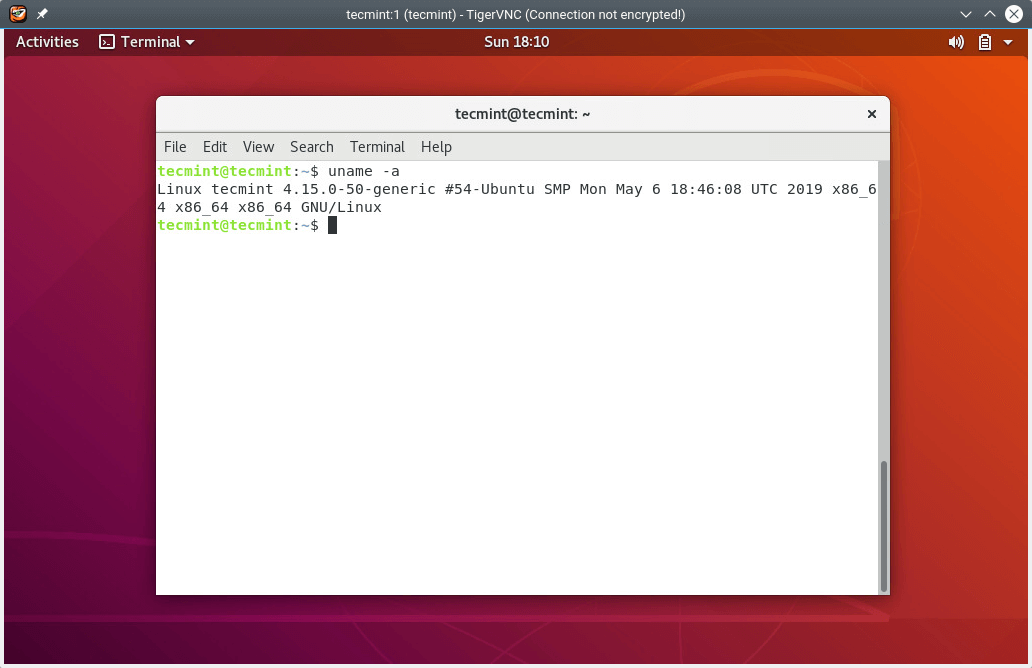
Attention: If you are security conscious, you may have noticed that the VNC viewer is showing "connection not encrypted" even though we have enabled SSH tunneling.
This is because it is designed to use specific security schemes other than SSH tunneling when attempting to authenticate with the server. However, the connection is secure once you have enabled SSH tunneling.
Creating a Systemd Unit File for TigerVNC Server
In order to manage the VNC server under systemd i.e start, stop, and restart the VNC service as needed, we need to create a unit file for it under the /etc/systemd/system/ directory, with root privileges.
$ sudo vim /etc/systemd/system/[email protected]
Then add the following lines in the file:
[Unit] Description=Remote desktop service (VNC) After=syslog.target network.target [Service] Type=simple User=tecmint PAMName=login PIDFile=/home/%u/.vnc/%H%i.pid ExecStartPre=/usr/bin/vncserver -kill :%i > /dev/null 2>&1 || : ExecStart=/usr/bin/vncserver :%i -localhost no -geometry 1024x768 ExecStop=/usr/bin/vncserver -kill :%i [Install] WantedBy=multi-user.target
Save the file and close it.
Next, reload the systemd manager configuration to read the newly created a unit file, as follows.
$ sudo systemctl daemon-reload
Then start the VNC service, enable it to auto-start at system boot and check its status as shown.
$ sudo systemctl start [email protected] $ sudo systemctl enable [email protected] $ sudo systemctl status [email protected]
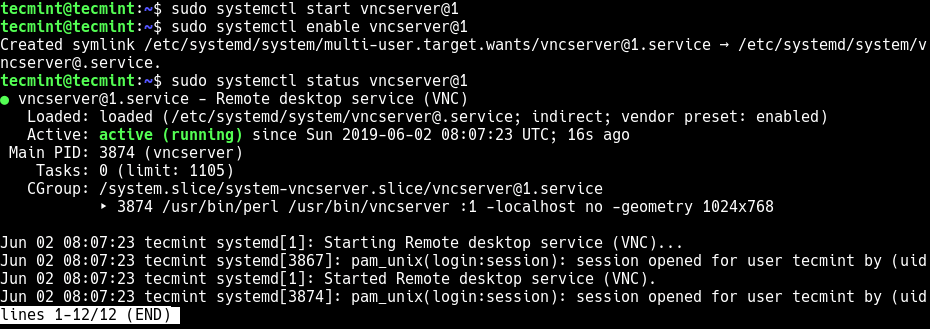
That's all! In this article, we've explained how to install and configure VNC server on Ubuntu Linux distribution. Share your queries or thoughts with us via the feedback form below.
If You Appreciate What We Do Here On TecMint, You Should Consider:
TecMint is the fastest growing and most trusted community site for any kind of Linux Articles, Guides and Books on the web. Millions of people visit TecMint! to search or browse the thousands of published articles available FREELY to all.
If you like what you are reading, please consider buying us a coffee ( or 2 ) as a token of appreciation.

We are thankful for your never ending support.
How To Install Vnc Viewer On Ubuntu
Source: https://www.tecmint.com/install-and-configure-vnc-server-on-ubuntu/
Posted by: wardnearst.blogspot.com

0 Response to "How To Install Vnc Viewer On Ubuntu"
Post a Comment